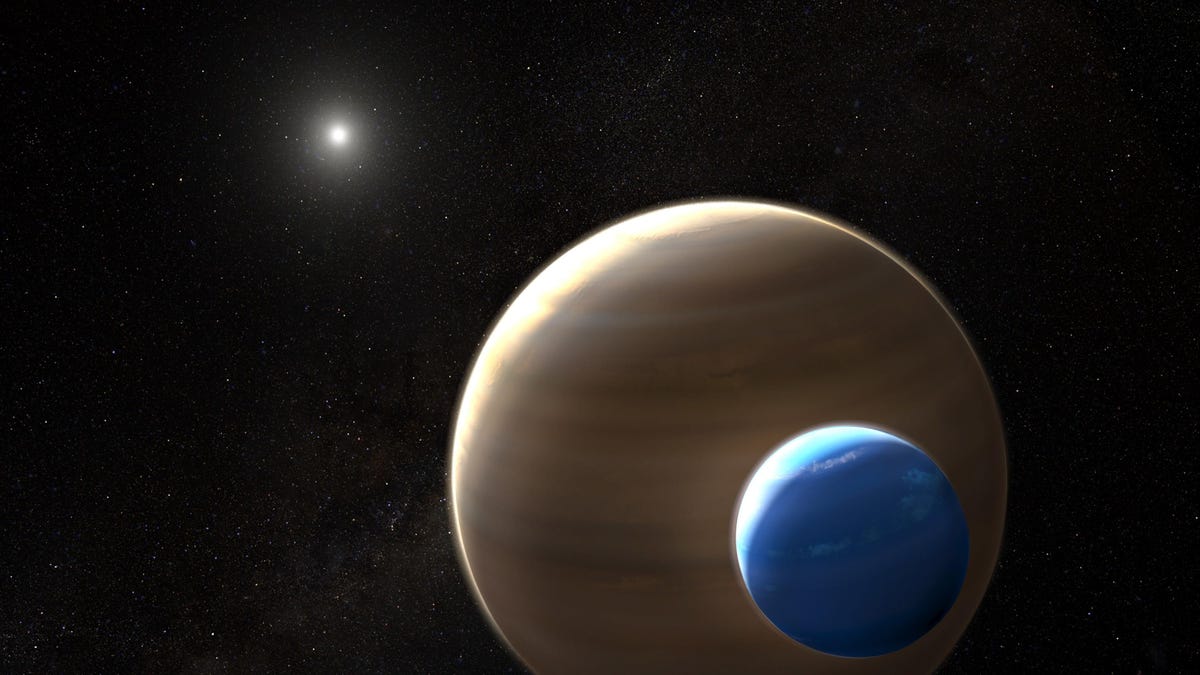Exomoons could have 'moon-moons,' and they might support alien life
Astronomers think they may have found the first moon circling a planet beyond our solar system. Now one researcher is looking at what the weather might be like on a moon orbiting that moon.

An artist's conception of an exomoon around the planet Kepler 1625b. Could this big moon have its own submoon?
Astronomers say they've zeroed in on what could be the first moon seen orbiting a planet in another star system. The potential "exomoon" is the size of Neptune and is circling a Jupiter-size gas giant called Kepler 1625b.
If there is such a massive satellite around Kepler 1625b, it'd be far larger than any of the dozens of moons in our own solar system, leading one researcher to consider whether the exomoon could host a moon of its own.
"This exomoon would be sufficiently large to stably host its own satellite," Duncan Forgan, a postdoctoral research fellow at the University of St Andrews in Scotland, writes in research notes submitted Oct. 30 to the AAS (American Astronomical Society). "This has sparked discussion of a new category of celestial object -- a moon-moon or submoon."
Forgan modeled the climate of such a hypothetical "moon-moon" and found that if one exists in the Kepler-1625 system it might even be livable, with temperatures on the surface ranging between 44 and 152 degrees Fahrenheit (7 and 67 Celsius).
"If large exomoons are found in the universe, this raises not only the prospect of moon-moons, but habitable moon-moons," Forgan concludes.
Granted, the temperature range Forgan's model finds for the hypothetical submoon could require some pretty strong air conditioning to keep humans comfortable during the hottest times, but it represents only a very preliminary estimate of what a distant moon-moon climate might be like.
Forgan made a number of assumptions for simplicity's sake in setting up the model, like presuming it has an atmosphere identical to Earth's and a regular orbit around the Neptune-size moon.
Let's also not forget there's no reason to think a moon-moon around this particular exomoon actually exists. (And by the way, we still don't have a strong scientific consensus that the exomoon itself exists.) But heck, it's fun to speculate about a distant future where we travel to the moon-moon of the giant moon around Kepler-1625b.
Hopefully by the time that's possible we've finally come up with better names for all these places.
NASA turns 60: The space agency has taken humanity farther than anyone else, and it has plans to go further.
Taking It to Extremes: Mix insane situations -- erupting volcanoes, nuclear meltdowns, 30-foot waves -- with everyday tech. Here's what happens.

